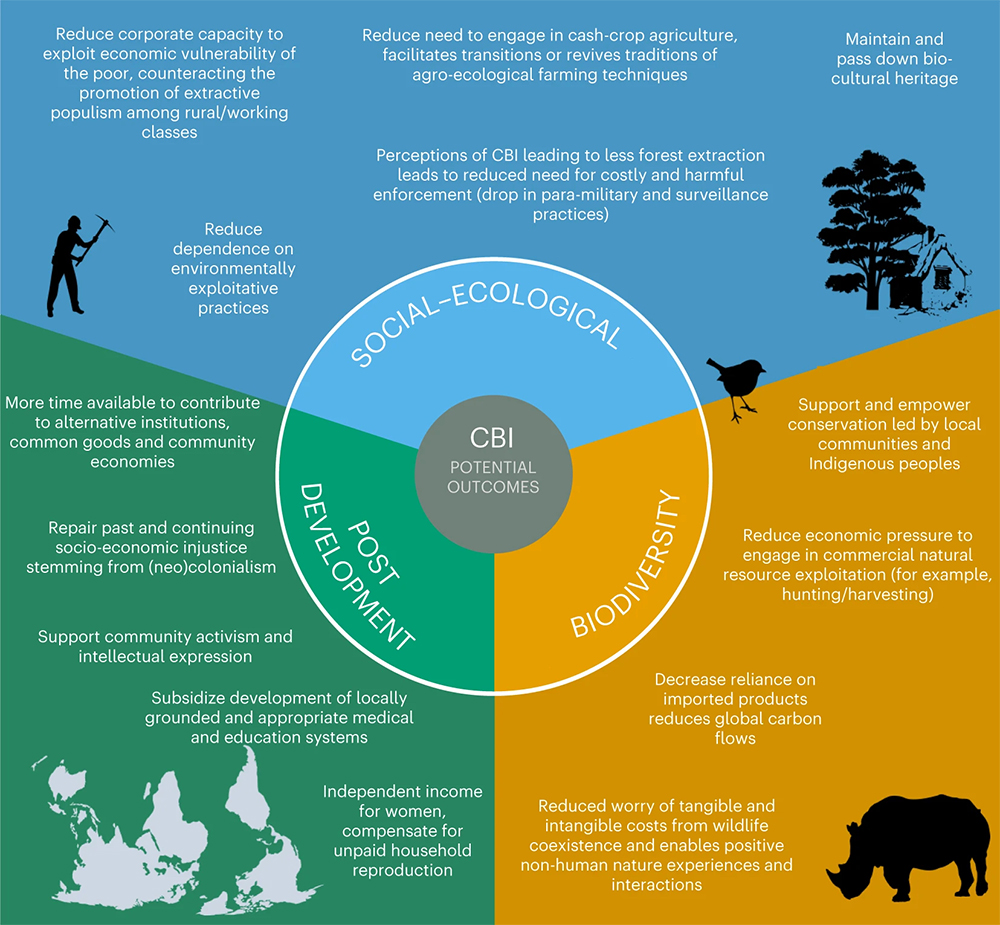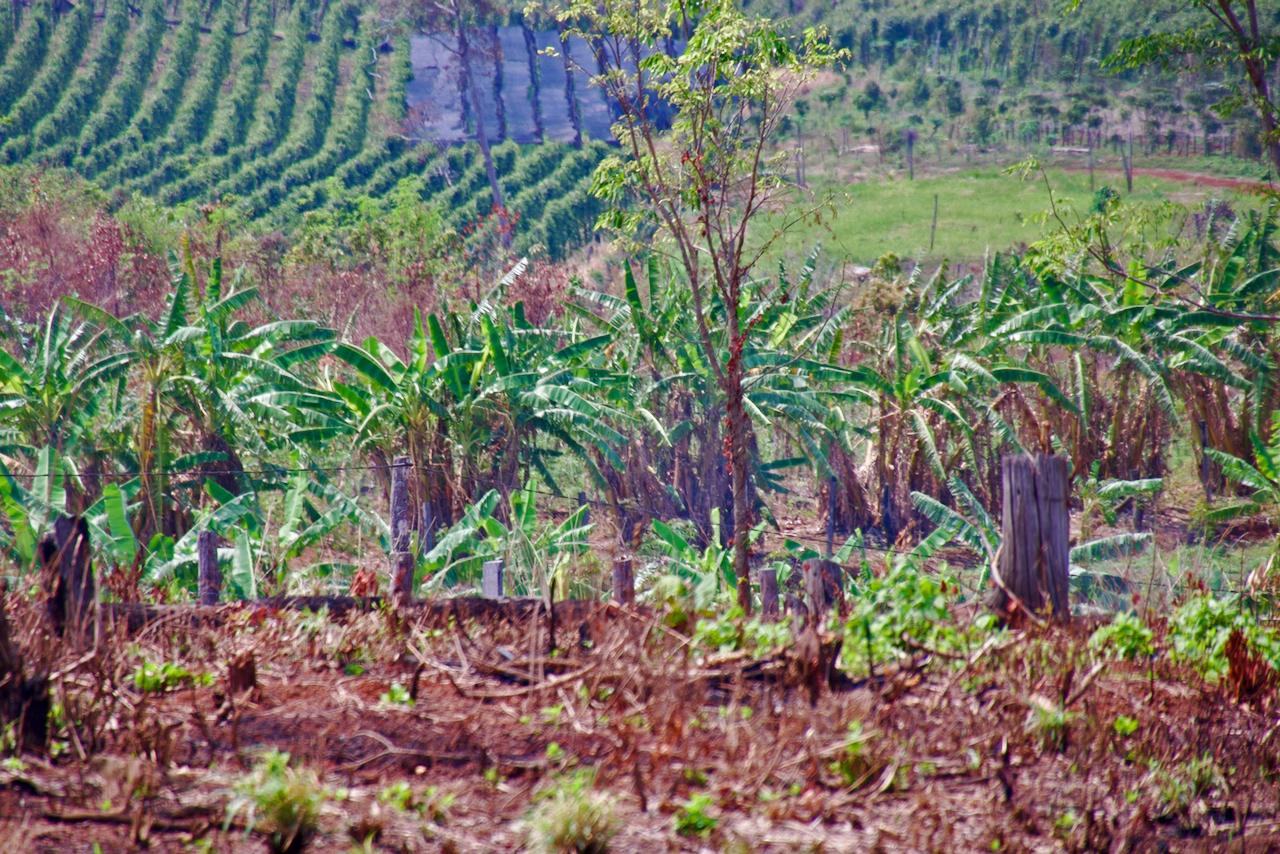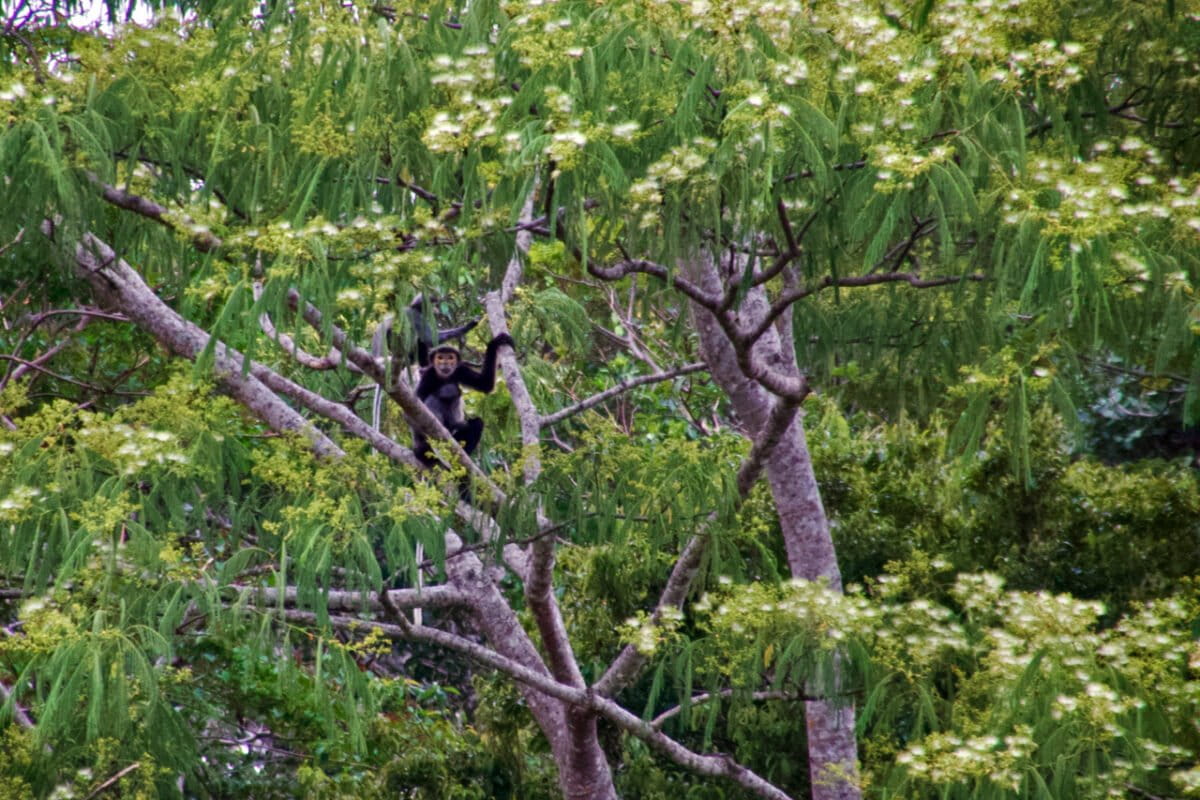- A recent study published in the journal Nature Sustainability examines the idea of a “conservation basic income” paid to community members living in or near key areas for biodiversity protection.
- The authors argue that unconditional payments could help reduce families’ reliance on practices that could threaten biodiversity by providing financial stability and helping them weather unexpected expenses.
- But the evidence for the effectiveness of these kinds of cash transfers is scant and reveals that they don’t always result in outcomes that are positive for conservation.
Hundreds of millions of people around the world live in spots considered critical for the protection of wildlife. More than three-quarters of these populations exist in less-industrialized countries, where poverty can contribute to the loss of biodiversity in the pursuit of meeting basic needs
Recently, in a study in the journal Nature Sustainability published May 18, a team of researchers calculated the cost of providing a conservation basic income (CBI) to the people living around biodiversity-rich parks and reserves or other vital areas for species protection, particularly in low- or middle-income countries. The CBI concept stems from similar proposals for what’s known as universal basic income, with the aim of providing a stable source of income and potentially benefiting biodiversity and nature in general.
There isn’t a lot of research on how effective a CBI — or on universal basic incomes, for that matter — would be. Where evidence for CBI does exist, it paints a mixed picture. It sometimes benefits the environment but other times leaves habitats worse off.
Critically, the money wouldn’t have restrictions or conditions, leaving recipients to spend it as they see fit. That freedom provides a “more just, more equitable” pathway to conservation, as opposed to more traditional measures that are often top-down and impose costs on local people, said lead author Emiel de Lange, an interdisciplinary conservation scientist with the Wildlife Conservation Society in Cambodia.

“[CBI] can help people living in conservation areas meet their needs and take more control over the way they interact with their natural environment,” de Lange, who is also a visiting researcher at the University of Edinburgh in the U.K., said in an interview. For example, with a larger financial cushion to handle unexpected expenses, so the thinking goes, families could forgo clearing a patch of forest to plant more income-producing crops, he added.
In 2020, Robert Fletcher, who teamed up with de Lange on this study, and Bram Büscher formally introduced the idea of conservation basic income in the journal Biological Conservation. Fletcher and Büscher are professors in the department of sociology of development and change at Wageningen University & Research in the Netherlands.
Their idea of conservation basic income grew out of the growing prominence of cash transfers as a way to address economic inequality. They had studied “market-based” conservation instruments for several decades and found they “often don’t achieve their goals at all,” Büscher told Mongabay.
These approaches include REDD+, short for reducing emissions through avoided deforestation and forest degradation, and other programs that give payments for ecosystem services. In many cases, little conservation-linked funding actually flows to local communities and Indigenous groups and hasn’t helped goad bottom-up economic development at the levels predicted. Fletcher and Büscher made the case that CBI could help bring about that development while also benefiting biodiversity.

They ended their 2020 paper with a set of questions to determine whether CBI could accomplish these goals — among them, how much to pay out and to whom.
De Lange, Fletcher and their colleagues picked up these questions in the current study. They began by combining existing maps, revealing where people live within key conservation areas. At the top end, distributing CBI could cost trillions of dollars, according to their calculations. But in another scenario, focused on the overlap between population and protected areas in low- and middle-income countries, with per capita gross national incomes of about $13,200 or less, it would cost a comparatively modest $478 billion per year to distribute $5.50 a day per person.
That figure is substantially higher than how much goes to conservation globally every year, the authors wrote, which in 2020 was about $133 billion, according to the U.N. Environment Programme. It’s also higher than the $200 billion per year for biodiversity protection, which nearly 200 countries pledged by 2030 to reach at the 2022 U.N. Biodiversity Conference in Montreal. However, reports suggest reversing biodiversity loss will require hundreds of billions more per year.
The authors highlight that their $478 billion figure is about as much as global spending on subsidies for “environmentally harmful energy and agricultural production” — in the form of payments to fossil fuel companies, for example. Eliminating those subsidies and then taxing the industries that continue the practices could be a way to pay for a CBI, the authors write. The team suggests reallocating these resources could pay for a CBI in less-industrialized countries, though others propose using annual subsidies to make these industries more sustainable and fund nature restoration projects.

To address problems like climate change and biodiversity loss, “These industries need to be wound down,” de Lange said.
Carla Archibald, a research fellow at Deakin University in Australia who was not involved in the study, said putting together this type of economic assessment is a “momentous feat.”
“It’s an important conversation to have,” she said.
Archibald and her colleague, Rachel Friedman, a postdoctoral research fellow at Australian National University, penned a response to the paper also published May 18 in Nature Sustainability.
They wrote CBI could be “a game changer for the livelihoods and well-being of conservation-adjacent peoples.”
But they also called for further research, in part because mechanisms like payments for ecosystem services, which are specifically aimed at inducing conservation benefits, haven’t proven to be all that effective.
“Subsistence is only one driver, and not always the main driver, of deforestation or habitat loss,” Friedman said.
Globally, agriculture, mostly at industrial scales, is the leading cause of habitat loss.
“If we’re really serious about making something like conservation basic income work, we have to actually drill down into what the ultimate drivers of the threats to habitat are.” What leads to those threats is often context-specific, she added.

Archibald and Friedman also called it “a logical leap” to conclude that CBI would automatically lead to more or better conservation.
“It’s hard for me to see how a conservation basic income could translate into reality at this stage,” Archibald told Mongabay. “You’re putting a lot of faith that providing people with money for a basic income will lead to positive conservation outcomes.”
Indeed, Fletcher and Büscher pointed out other potential issues with CBI in their 2020 paper. They noted that increased income could take pressure off resources, but it might also allow people to purchase equipment for more land clearance.
De Lange and his colleagues also wrote that providing CBI could attract an influx of people to live in and around sensitive, biodiversity-rich areas, potentially leading to more pressure on the local environment.
“I think that’s something where [more] experimentation and piloting is required,” de Lange said.
Currently, researchers in Zimbabwe and in Indonesia’s Papua region are testing this idea. Studies in other parts of the world in some cases bolster the case for CBI distributions while detracting from it in others.
On the one hand, research has found that an ongoing cash transfer program aimed at encouraging education and better health has so far had conservation benefits in Indonesia. Between the start of the program in 2008 and 2013, the loss of tree cover declined by an average of 30% near the villages where the payments were distributed. The authors published their results in the journal Science, attributing these benefits to people having a form of insurance in the extra cash, and to their ability to buy goods instead of acquiring them by clearing forest.

“This is very compelling evidence to me,” de Lange said, “because it’s a nationwide cash transfer scheme that is essentially unconditional with respect to conservation outcomes.”
However, studies in Sierra Leone and Mexico have shown that, at least in the short term, cash transfers can lead to spikes in land clearance and deforestation.
Still, de Lange said he suspects that something like a CBI may be a net positive for nature in the long run. In part, that’s because we often have a skewed view of the relationship between humans and biodiversity, he said.
“Almost the entire world has been inhabited by people for thousands of years,” he said. The presence of people doesn’t mean that there won’t be any biodiversity in an area, de Lange said.
“There are many communities that have much more resilient and you could say sustainable relationships with our environment,” he added.
In his view, biodiversity loss has more to do with societal constraints — ones that leave people with few choices for paying back debts, for example.
Rafts of evidence have shown that conservation typically wins out when Indigenous peoples and local communities play significant roles in the management of the lands they care for. De Lange said CBI could be a way both to acknowledge those contributions and provide autonomy for these communities. But he also said this paper is “a first step” in figuring out how this concept might work and that it likely wouldn’t be successful on its own.
“This isn’t a silver bullet,” de Lange said. “This needs to be part of broader efforts to respect rights to land management, especially in the context of Indigenous peoples.”
Banner image: A black-shanked douc langur (Pygathrix nigripes) at the edge of the Keo Seima Wildlife Sanctuary in Cambodia. The primate species is critically endangered due to hunting and habitat loss. Image by John Cannon/Mongabay.
John Cannon is a staff features writer with Mongabay. Find him on Twitter: @johnccannon
Changing circumstances turn ‘sustainable communities’ into deforestation drivers: Study
Citations:
Alix-Garcia, J., McIntosh, C., Sims, K. R., & Welch, J. R. (2013). The ecological footprint of poverty alleviation: evidence from Mexico’s Oportunidades program. Review of Economics and Statistics, 95(2), 417-435. doi:10.1162/REST_a_00349
Archibald, C. L., & Friedman, R. S. (2023). Weaving nature into social safety nets. Nature Sustainability, 1-2. doi:10.1038/s41893-023-01116-6
Dawson, N. M., Coolsaet, B., Sterling, E. J., Loveridge, R., Gross-Camp, N. D., Wongbusarakum, S., … Rosado-May, F. J. (2021). The role of Indigenous Peoples and local communities in effective and equitable conservation. Ecology and Society, 26(3). doi:10.5751/es-12625-260319
de Lange, E., Sze, J. S., Allan, J., Atkinson, S., Booth, H., Fletcher, R., … & Saif, O. (2023). A global conservation basic income to safeguard biodiversity. Nature Sustainability, 1-8. doi:10.1038/s41893-023-01115-7
Ferraro, P. J., & Simorangkir, R. (2020). Conditional cash transfers to alleviate poverty also reduced deforestation in Indonesia. Science Advances, 6(24), eaaz1298. doi:10.1126/sciadv.aaz1298
Fletcher, R., & Büscher, B. (2020). Conservation basic income: A non-market mechanism to support convivial conservation. Biological Conservation, 244, 108520. doi:10.1016/j.biocon.2020.108520
Wilebore, B., Voors, M., Bulte, E. H., Coomes, D., & Kontoleon, A. (2019). Unconditional transfers and tropical forest conservation: evidence from a randomized control trial in Sierra Leone. American Journal of Agricultural Economics, 101(3), 894-918. doi:10.1093/ajae/aay105
FEEDBACK: Use this form to send a message to the author of this post. If you want to post a public comment, you can do that at the bottom of the page.
